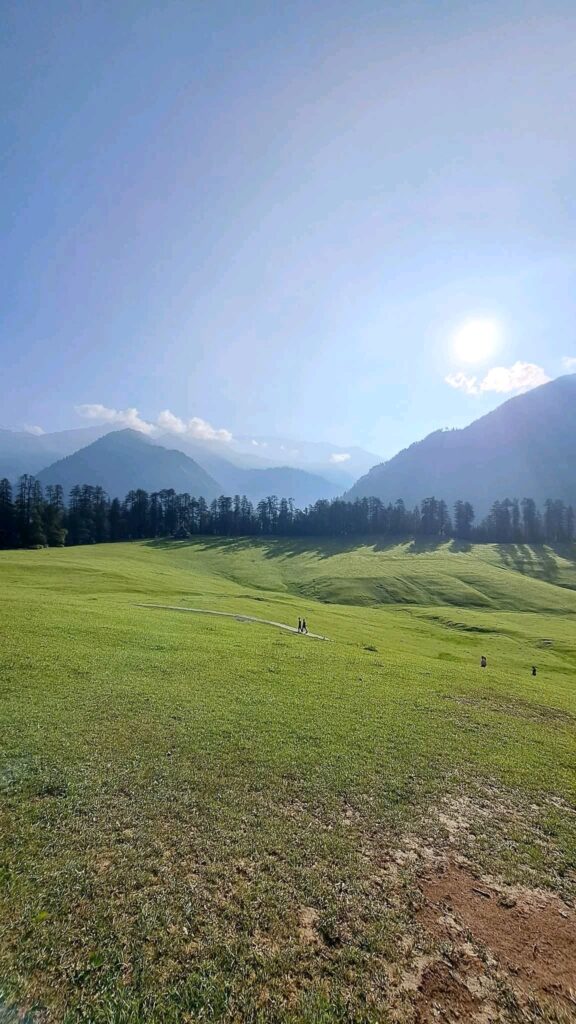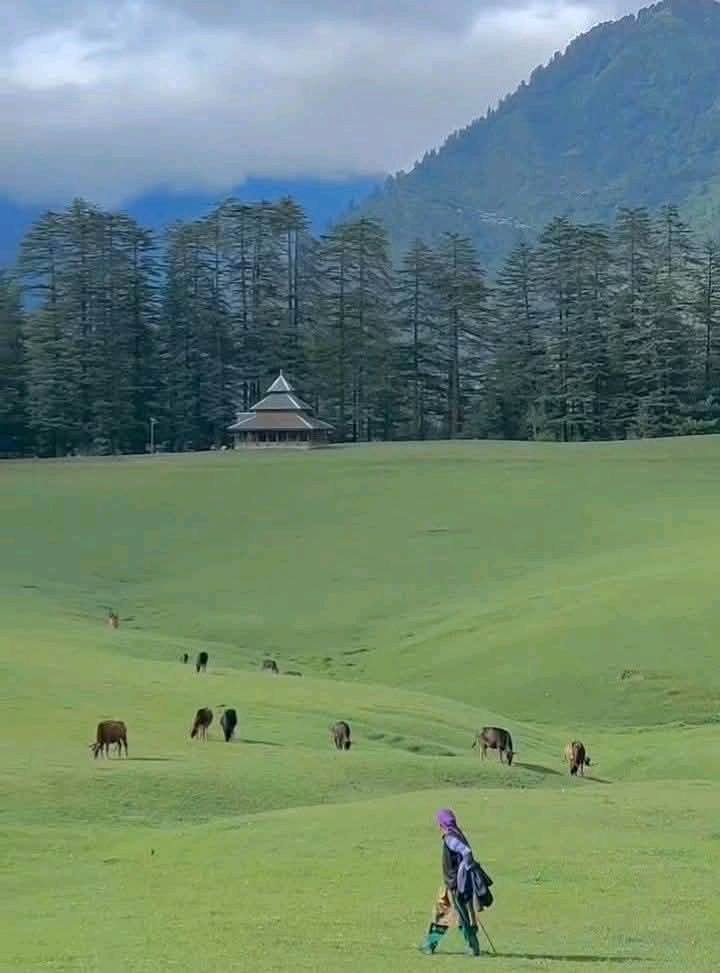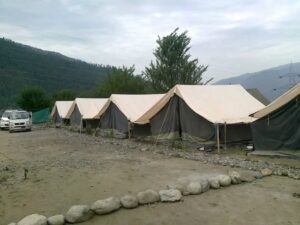When people think about Himachal Pradesh, places like Manali, Shimla, and Dharamshala usually come to mind. But tucked away in the lap of the Himalayas is a hidden paradise called Sainj Valley. Located in the Kullu district, Sainj Valley is untouched, peaceful, and breathtakingly beautiful. If you’re someone who loves nature, quietness, and raw adventure, Sainj Valley will feel like a dream.
Let’s take you through everything you need to know — from how to reach, what to do, and why this place deserves a spot on your travel list.
Where is Sainj Valley?
Sainj Valley lies inside the Great Himalayan National Park (GHNP), a UNESCO World Heritage Site. It is a quieter, less crowded part of Kullu and remains mostly unexplored by the tourist crowd. Surrounded by tall pine trees, flowing rivers, and lush green meadows, it feels like stepping into a fairy tale.
How to Reach Sainj Valley from Chandigarh
- By Car:
The distance from Chandigarh to Sainj Valley is about 230 km, and it takes around 7–8 hours by road. You can drive via Chandigarh → Bilaspur → Mandi → Aut → Sainj. After reaching Aut (the tunnel area before Kullu), you need to leave the main highway and take the road towards Sainj. The drive after Aut is scenic, with forests, waterfalls, and small Himachali villages along the way. - By Bus:
You can also take a bus from Chandigarh to Aut. From Aut, you’ll find local buses or taxis going towards Sainj. - Nearest Airport:
The nearest airport is Bhuntar Airport, about 50 km from Sainj Valley. Flights are available from Chandigarh and Delhi. - Nearest Railway Station:
Joginder Nagar Railway Station is the closest, but it’s better to travel by road for comfort and flexibility.
Things to Do in Sainj Valley
1. Explore the Great Himalayan National Park (GHNP)


Sainj Valley is one of the entrances to GHNP. You can go for short day hikes or even multi-day treks deep inside the park. The forests are thick with Deodar and Oak trees, and the air smells of pine and fresh earth. This park is also home to rare animals like the Himalayan Tahr and Snow Leopard (though spotting them is very rare).
2. Visit the Traditional Villages
The villages in Sainj Valley look like they belong to another century. Homes are made of wood and stone, locals wear colorful clothes, and life moves slowly here. Villages like Deori, Shensher, and Saran are perfect for experiencing real Himachali culture. People are welcoming and often invite visitors for a cup of tea or a simple meal.
3. Trek to Pundrik Lake
This is one of the hidden gems of Sainj Valley. The trek to Pundrik Lake is short but magical. The lake is surrounded by dense forest and looks like a scene from a postcard. Locals consider it holy, and it’s said that it’s forbidden to even dip your hands in the lake water.
4. Camp at Meadows (Thach)
In Himachali language, “Thach” means a meadow. Sainj Valley is full of them. You can camp at places like Tinder Thach and Shakti Thach, where you will be surrounded by green fields, tall trees, and snow-capped peaks in the distance. At night, the sky is full of stars like you’ve never seen before.
5. Attend a Local Festival
If you’re lucky, you might visit during one of the local festivals. Shensher Devta is the local deity, and villagers organize colorful processions, music, and dance in his honor. These festivals are pure, joyful, and without any touristy feel.
Why Sainj Valley is Special (and Still a Secret)
- Offbeat:
Sainj Valley is not commercial like Manali. No crowds, no traffic jams, no loud music. Just you and nature. - Affordable:
Staying, eating, and traveling here is very affordable compared to popular tourist spots. - Authentic Culture:
You see the real Himachal here. Traditional houses, old temples, and simple mountain life that hasn’t changed for hundreds of years. - Perfect Weather:
Summers are cool, and winters are snowy. Monsoon months (July-August) bring lush greenery, but trekking can be tricky. - Photography Heaven:
Every turn in Sainj Valley looks like a perfect photograph — green fields, old wooden bridges, colorful houses, and misty mountains.
Best Time to Visit
- April to June: Perfect weather with blooming flowers and pleasant days.
- September to November: Clear skies and golden colors in the forests.
- December to February: Snowfall season (but check road conditions before planning).
Avoid heavy monsoon months (July–August) if you’re planning outdoor activities.
Tips for Travelers
- Network Issue:
Mobile signals are weak. Airtel and Jio work in some parts, but enjoy the digital detox! - Respect Nature and Culture:
Don’t litter, and respect local traditions, especially around temples and sacred spots. - Light Packing:
Good walking shoes, light jackets, and a camera are a must. Carry cash because there are no ATMs nearby. - Stay Options:
Homestays are the best way to experience Sainj. You live with locals, eat home-cooked meals, and learn about their way of life.
Final Words: Why You Should Visit Sainj Valley
In today’s busy world, we rarely find places that are pure, quiet, and untouched. Sainj Valley is one of those rare places. It’s not just a destination — it’s a feeling.
The calm rivers, the sound of the birds, the smell of fresh pine, and the smiling faces of the villagers stay with you long after you leave.
If you’re tired of crowded tourist spots and want a real adventure where you can connect with nature and yourself, Sainj Valley is waiting for you.
So pack your bags, leave your worries behind, and step into a world where time slows down, and nature heals you.
Source: Facebook



Be First to Comment